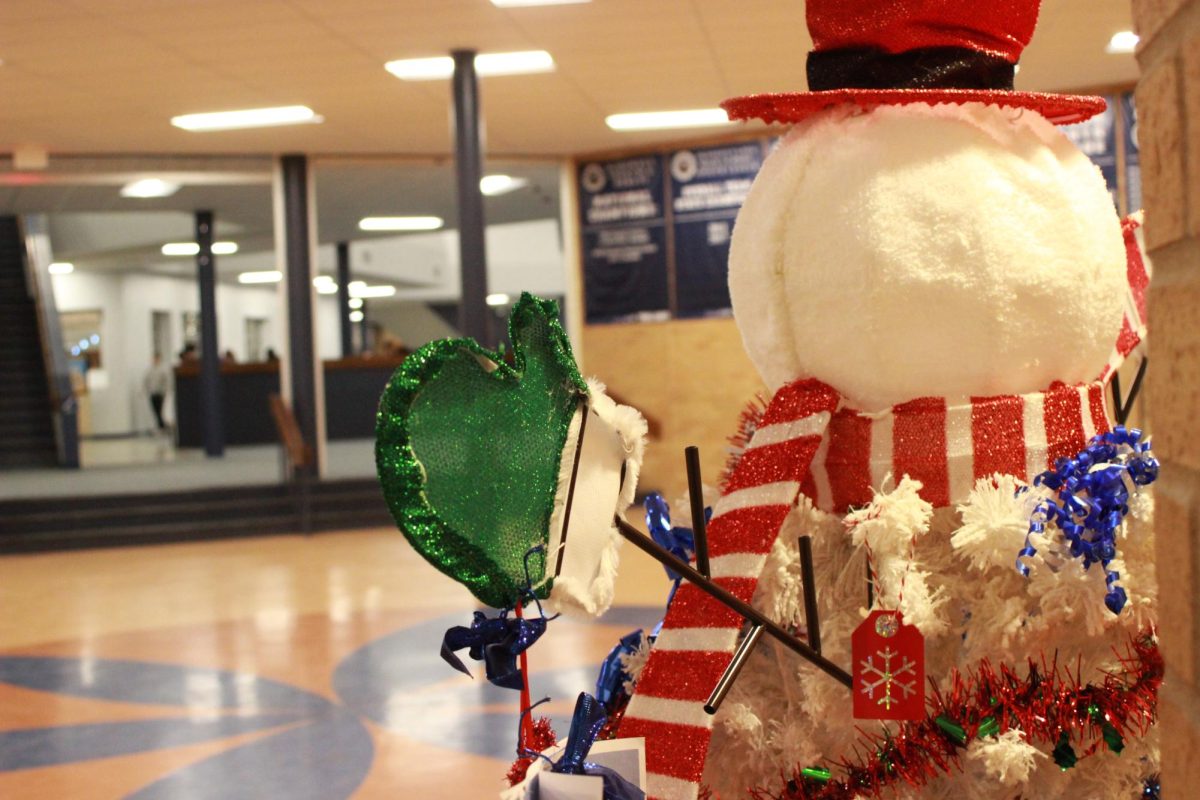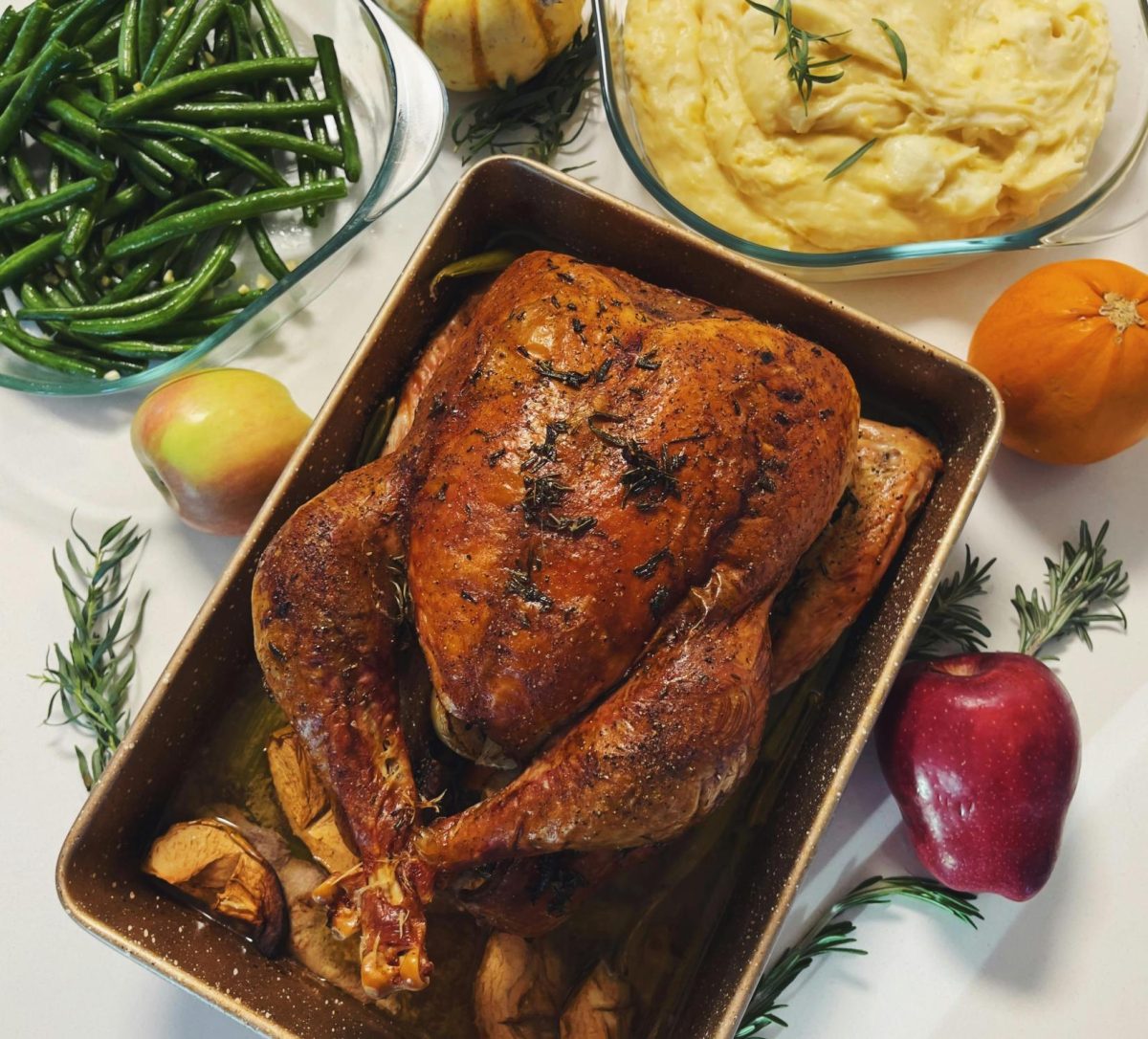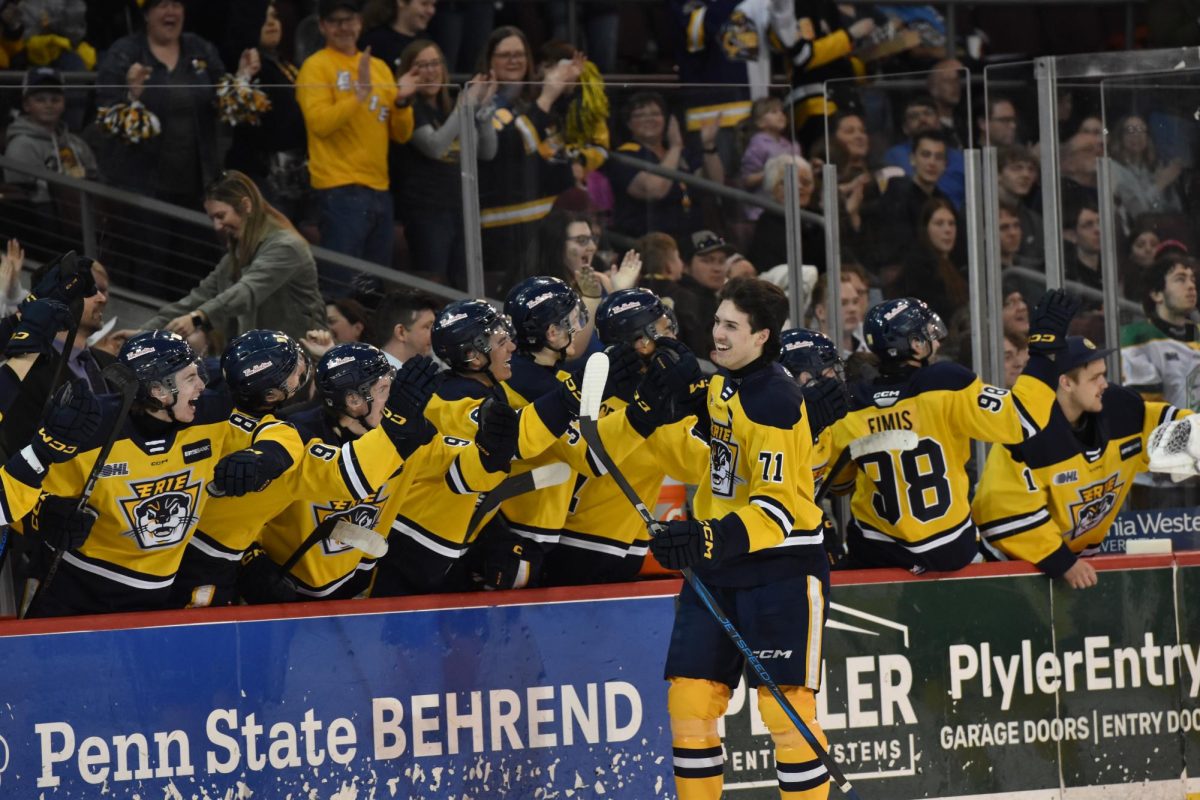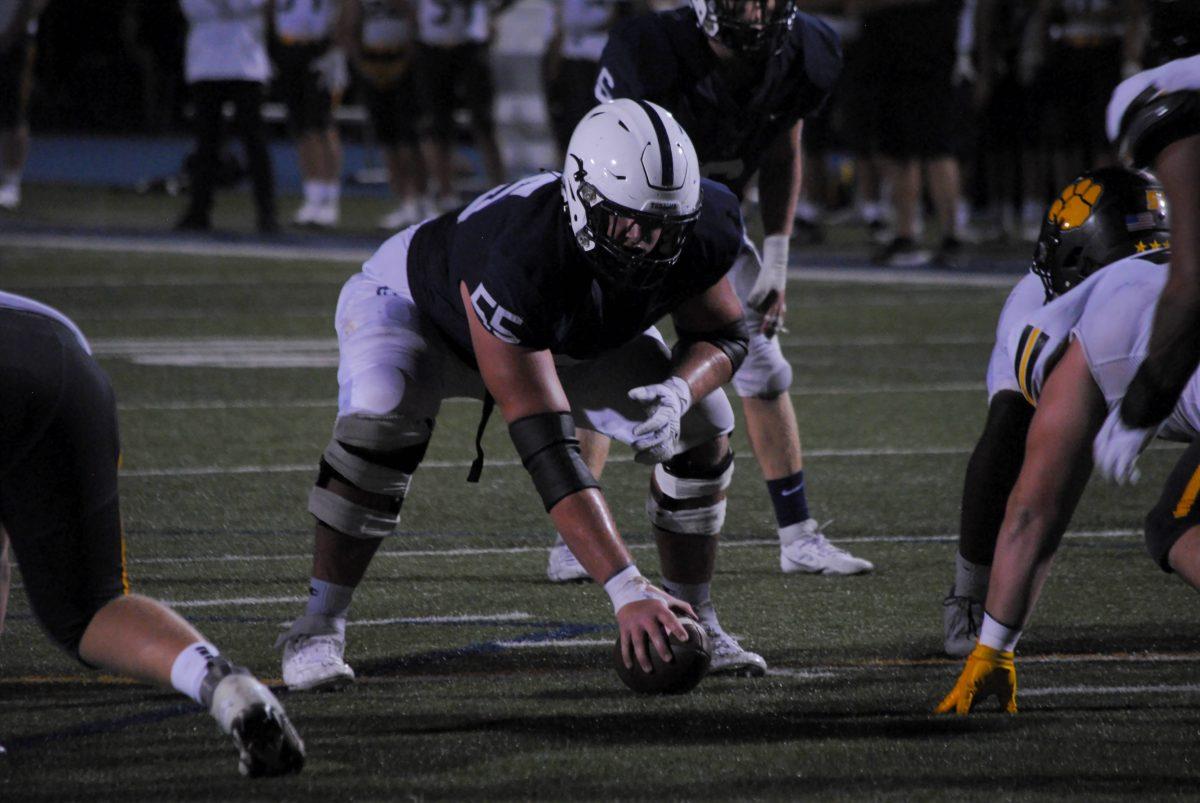By Ryleigh Heasley
In the maze of arm drags, shrugs and snaps, wrestling is a sport of intricate narratives and athletic skillfulness. As confusion often obscures curiosity for many, this sideline guide will help you become a wrestling fan this season. To be a fan is to understand, and within the heart of the mat, lies a compelling world waiting to be decoded.
Rules of the Mat
The main objective of a wrestling match is to pin the opponent or score points. However, there are multiple ways to win a wrestling match, pinfall (pin), a technical fall or more points than the opponent.
The main rule is that a wrestler cannot lock their arms when they’re on the top or bottom.
Joshua Knapp, the head coach for McDowell wrestling says, “A lot of the rules we have are major for safety and to keep the match moving.” So, the best way for spectators to learn the rules is to be around the sport and pay close attention.
Jackson Bowers, a wrestler for Fort LeBoeuf says, “By watching and understanding more of the sport you can learn to appreciate the technical aspect of the sport that isn’t flashy, but still shows results and helps wrestlers find success.”
Determining the Game Plan
The main thing spectators should look for in a wrestling match is technique and strategies. When wrestlers are in neutral there is something called, head outside single leg. The wrestler is essentially wrapping both arms on either side of the leg with the head on the outside near the hip. They can also grab both legs which is almost the same thing, but called head outside double leg.
A lot of tactics from wrestlers revolve around getting lower than their opponent. They want to get their hands inside of what’s called “inside control.” This means the wrestlers has a dominant position.
At McDowell, Knapp’s biggest tactic for his athletes is outworking people by keeping a high pace. “That’s part of what I call the Trojan Way. We have a higher pace than everybody else,” he says.
Conditioning is evident in an athlete’s training routine and once they are on the mat, it is easy to see which wrestlers are in shape vs. those who aren’t.
“This can make better wrestlers lose matches to kids that aren’t as good because they get tired and can’t wrestle the full match,” says Bowers.
Wrestlers start making mistakes when they get tired. They may stand up straight or just “hang out” and think they are fooling everybody while they are resting. “That’s where the wrestlers get in trouble: when they’re not in good condition, and they kind of just start hanging out a little bit and laying on their belly or when they’re neutral, they stand up a little straight. And that costs you a lot,” says Knapp. The mental errors are tough, especially because wrestling isn’t the longest sport but it’s a full-body effort.
How to Make a Move
The moves a wrestler performs determines the outcome of every match. When performing an arm drag the wrestler uses their opponent’s momentum to the opponent’s disadvantage. They hook the opponent’s arm and flip them over on the mat. The wrestler may roll to their side to give the move extra momentum.
The shrug is a quick and effective way to counter an opponent’s attempts to control the upper body. The wrestler lifts their shoulders and elbows upward while simultaneously moving their hips back. This motion helps break the opponent’s grip and create space. As the shoulders are lifted, the wrestler pushes the opponent’s arms away, preventing them from establishing control. The goal is to create enough distance to escape and potentially set up their own offensive moves.
A snap involves tying up the opponent, one arm behind the opponent’s head with the opposite hand gripping one of their triceps. The wrestler then executes an explosive snap motion with both arms as if to spike the opponent’s head into the mat.
Not being in the bottom position is key to winning a wrestling match. The most effective way to get out of this position is called a stand-up. This is when the opponent is on top of the wrestler and they stand up, trying to get on their feet. Knapp says, “It’s with one point, but it gets you off the bottom with very little danger.”
There are a couple other moves that can get wrestlers off the bottom such as Granby roll and hip roll; these are both considered reversals which get you back on the top and are worth two points. So getting off the bottom is vital in wrestling. Knapp states, “That’s why the guys who win medals at states and college and nationals, they’re the guys who get off the bottom the best.
Pound by Pound Breakdown
“Making and maintaining weight is part of the sport that nobody really sees but is a large part of the sport and makes what wrestlers do much more impressive than it already is,” says Bowers.
High School wrestling features specific weight classes, such as 106 lbs, 113 lbs, and so on. When watching the lower to middle weights they tend to work at a way faster pace and they have a little more athleticism. As you go up and see the heavyweights, 285 lbs, it’s slower paced.
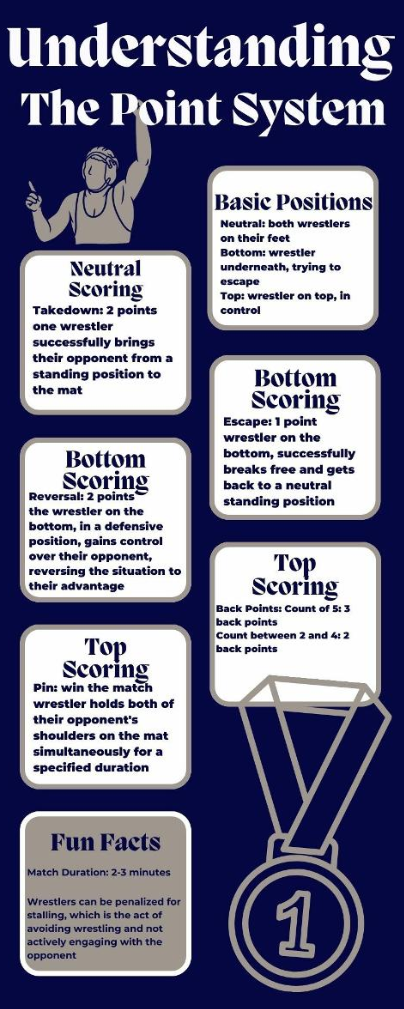
“285 pounders, it’s not as fast, it’s a little more plodding and slow-moving, whereas your 107 pounders, it’s boom, boom, boom, fast, fast, fast,” Knapp says.
When around the middle area 145-172 lbs that’s where you will notice a very nice mix of strength, speed, and athleticism. Oftentimes, those are the most popular weights at big tournaments.
Point for One, Score for All
Although it seems like it, wrestling isn’t just an individual sport. Points can count towards your team’s victory, not just yourself. Sometimes wrestlers will aim to score points to get their team up. “You could go and lose 10-0 but for your team that could still be a win because you were expected to give up 6 team points,” Bowers says.
While watching two competitive teams you can notice this aspect. For most wrestlers it is just as much a team sport as it is an individual sport.
As Bowers and his team were competing at team states his junior year, the semifinal matches were against Chestnut Ridge. He was the second to last match and the team scores were very close and the final score could have gone either way depending on the last two matches.
“I went out and pinned the kid in the first period and to most spectators that was just a win but it meant so much more,” recalled Bowers. It had sealed the match for them and guaranteed a spot in the semifinals.
The scoreboard only scratches the surface of a sport run with raw determination. Wrestling invites you not merely to watch, but to understand. You might find an appreciation for a sport that thrives on the subtle dance between power, strategy and pure athleticism.




